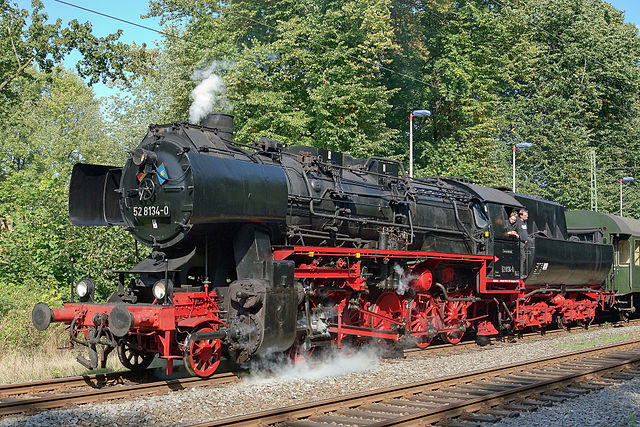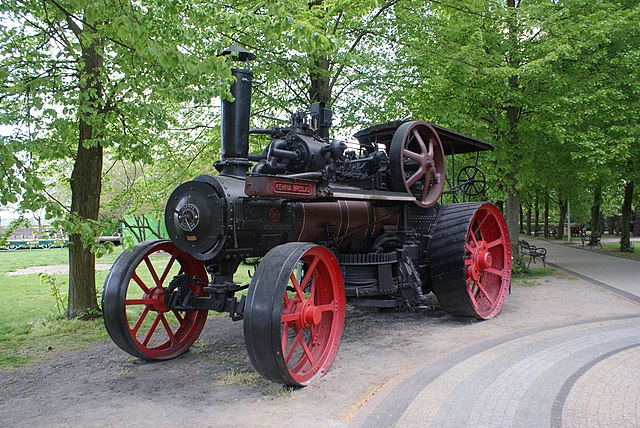A compound steam engine unit is a type of steam engine where steam is expanded in two or more stages.
A typical arrangement for a compound engine is that the steam is first expanded in a high-pressure (HP) cylinder, then having given up heat and losing pressure, it exhausts directly into one or more larger-volume low-pressure (LP) cylinders. Multiple-expansion engines employ additional cylinders, of progressively lower pressure, to extract further energy from the steam.
Cutaway of triple expansion compound steam engine, 1888
Robey horizontal cross-compound steam engine small high-pressure cylinder (left) and large low-pressure cylinder (right)
The Coldharbour Mill Pollit and Wigzell cross-compound engine, which drives the rope race seen in the background, transmitting power to line shafts on all five levels of the mill
A Marchent & Morley horizontal tandem compound engine built 1914, at Craven Mills, Cole. The air pump and jet condenser are nearest with the LP cylinder beyond. It is fitted with Morley's patent piston drop valves
A steam engine is a heat engine that performs mechanical work using steam as its working fluid. The steam engine uses the force produced by steam pressure to push a piston back and forth inside a cylinder. This pushing force can be transformed, by a connecting rod and crank, into rotational force for work. The term "steam engine" is most commonly applied to reciprocating engines as just described, although some authorities have also referred to the steam turbine and devices such as Hero's aeolipile as "steam engines". The essential feature of steam engines is that they are external combustion engines, where the working fluid is separated from the combustion products. The ideal thermodynamic cycle used to analyze this process is called the Rankine cycle. In general usage, the term steam engine can refer to either complete steam plants, such as railway steam locomotives and portable engines, or may refer to the piston or turbine machinery alone, as in the beam engine and stationary steam engine.

A model of a beam engine featuring James Watt's parallel linkage for double action
A mill engine from Stott Park Bobbin Mill, Cumbria, England
A steam locomotive from East Germany. This class of engine was built in 1942–1950 and operated until 1988.
A steam ploughing engine by Kemna








